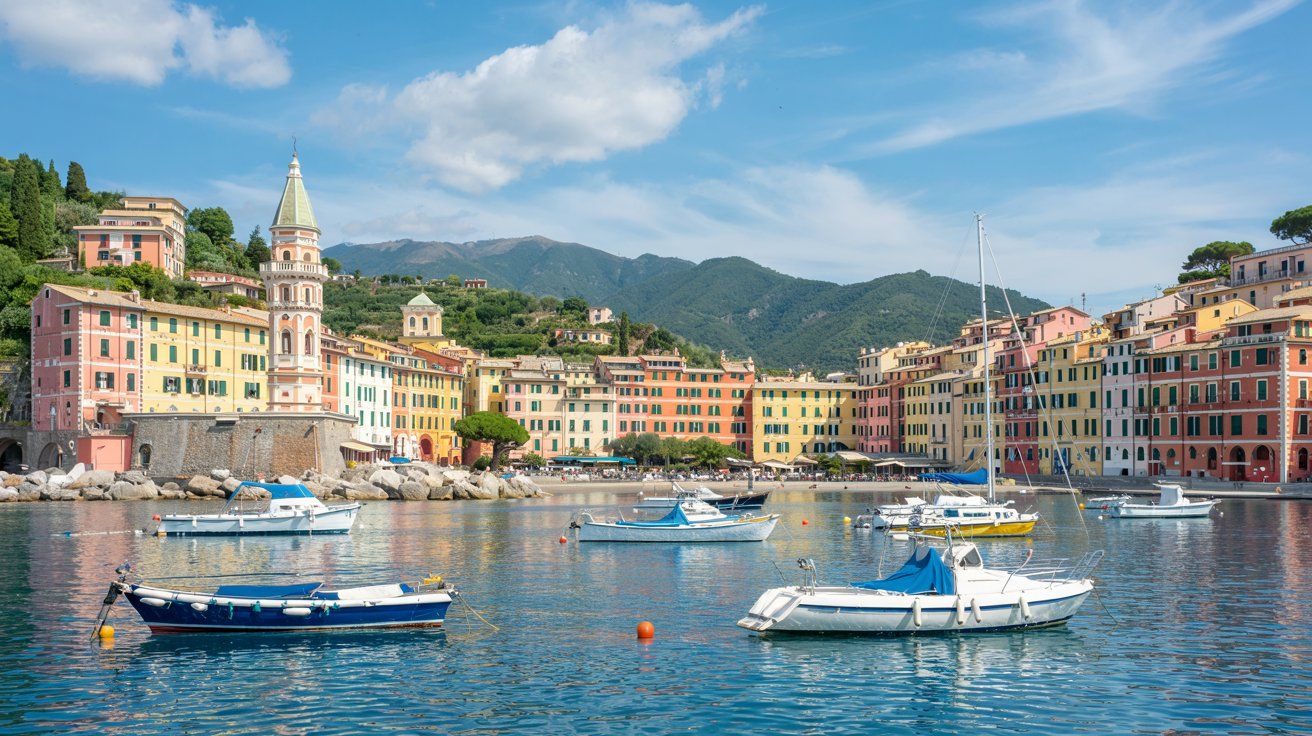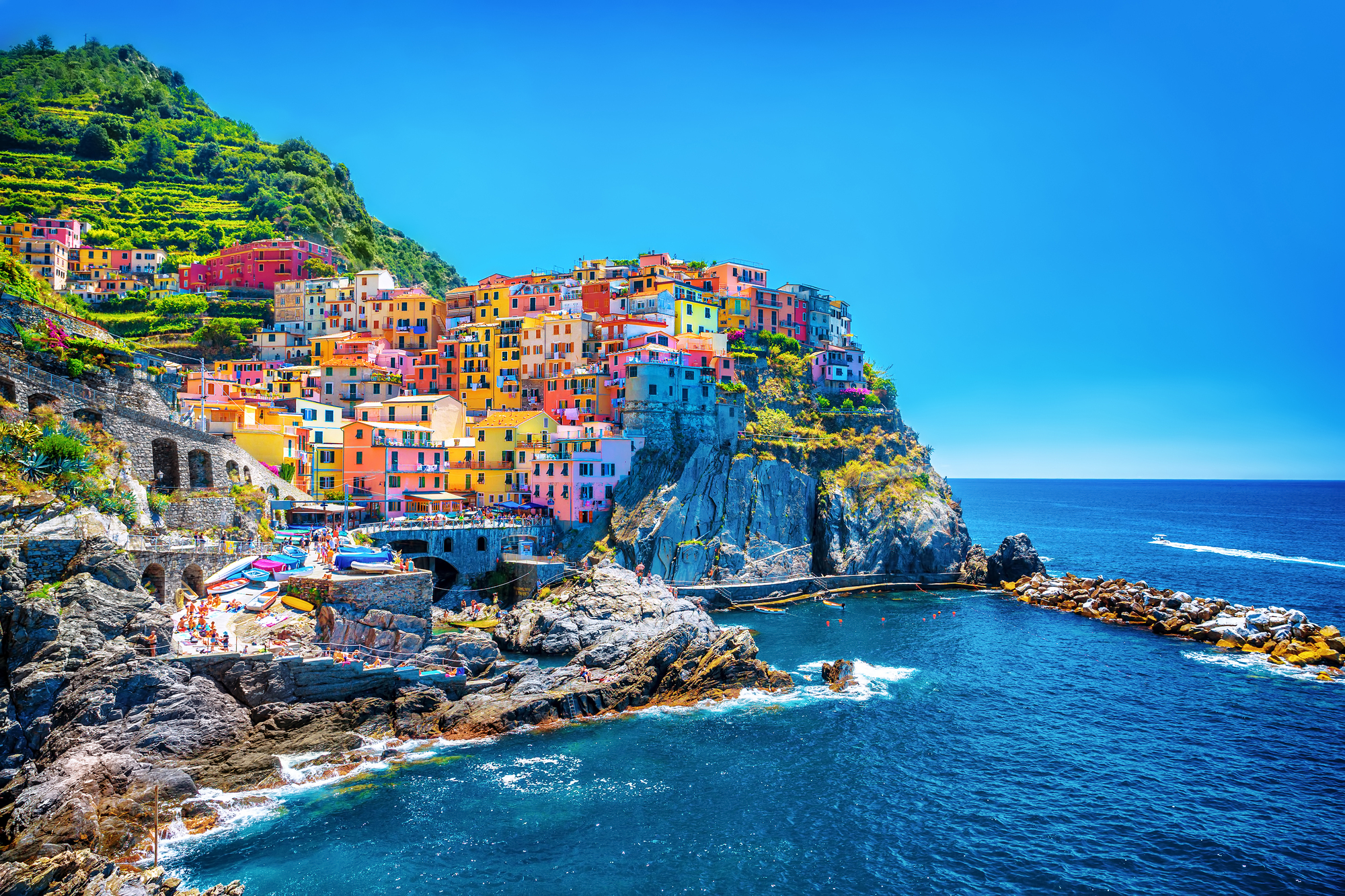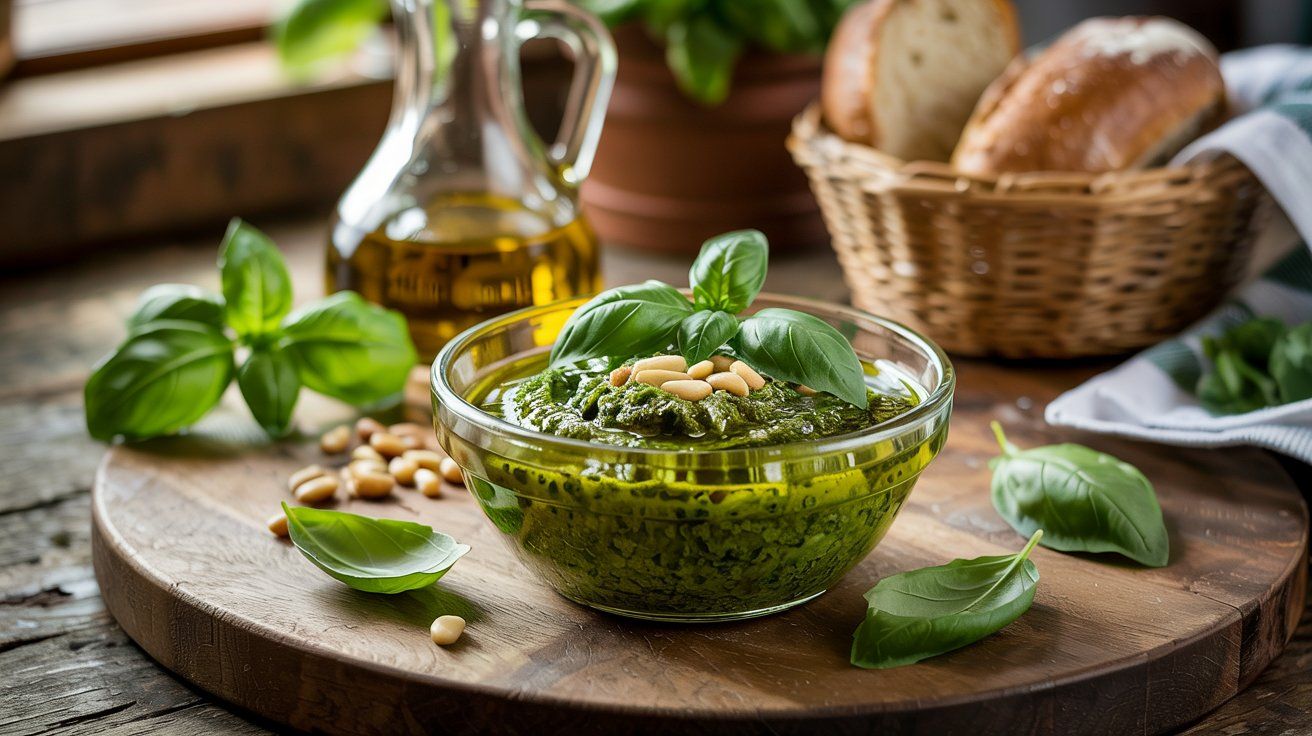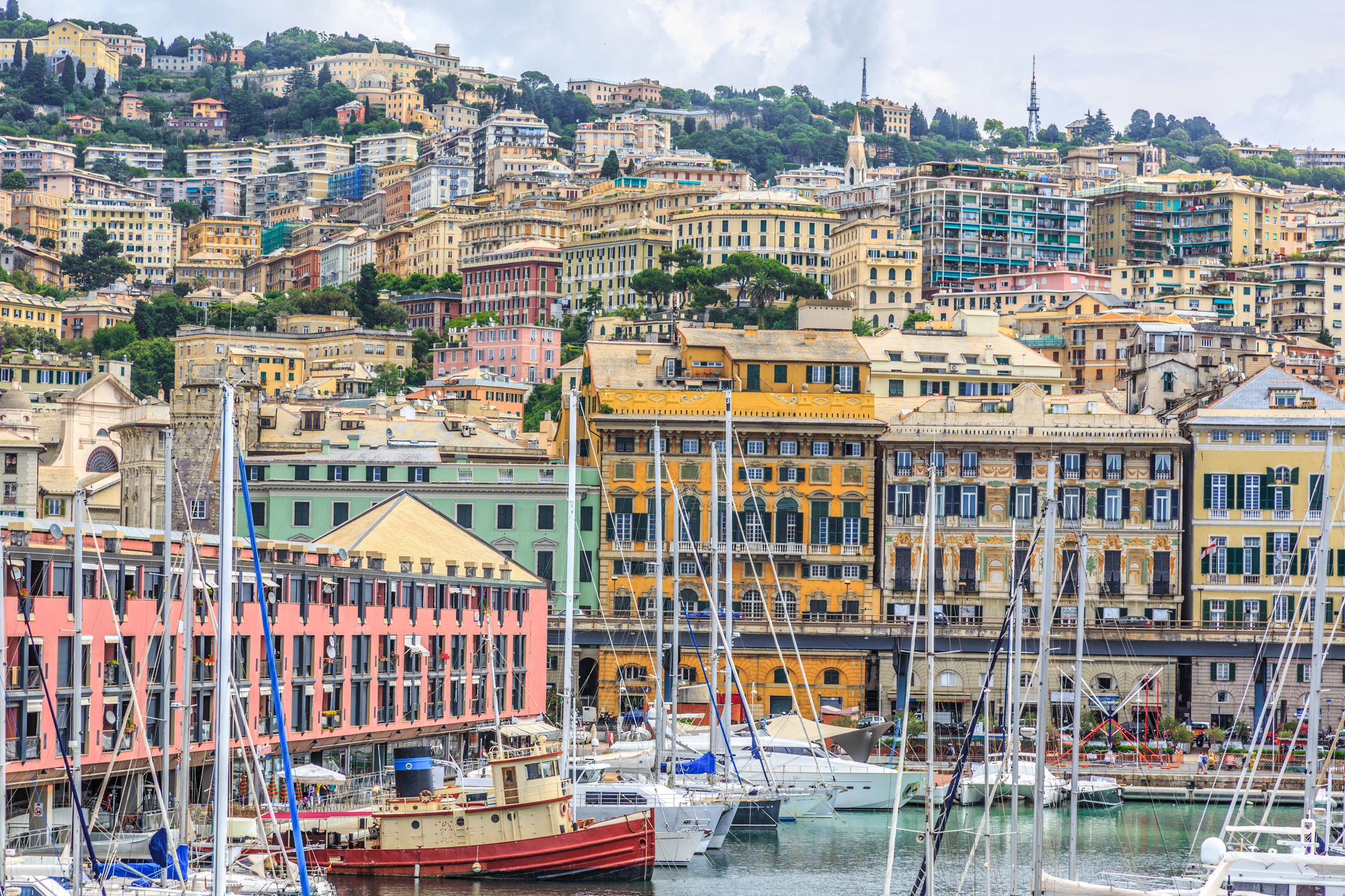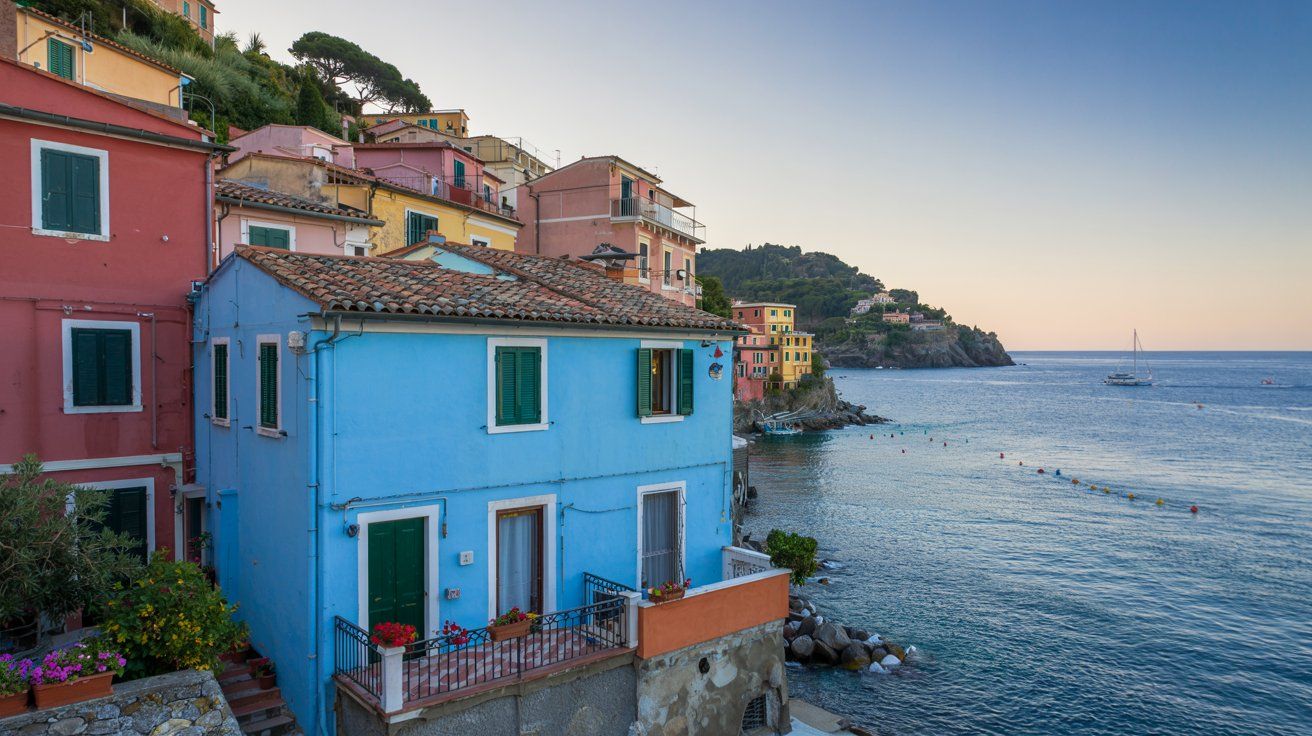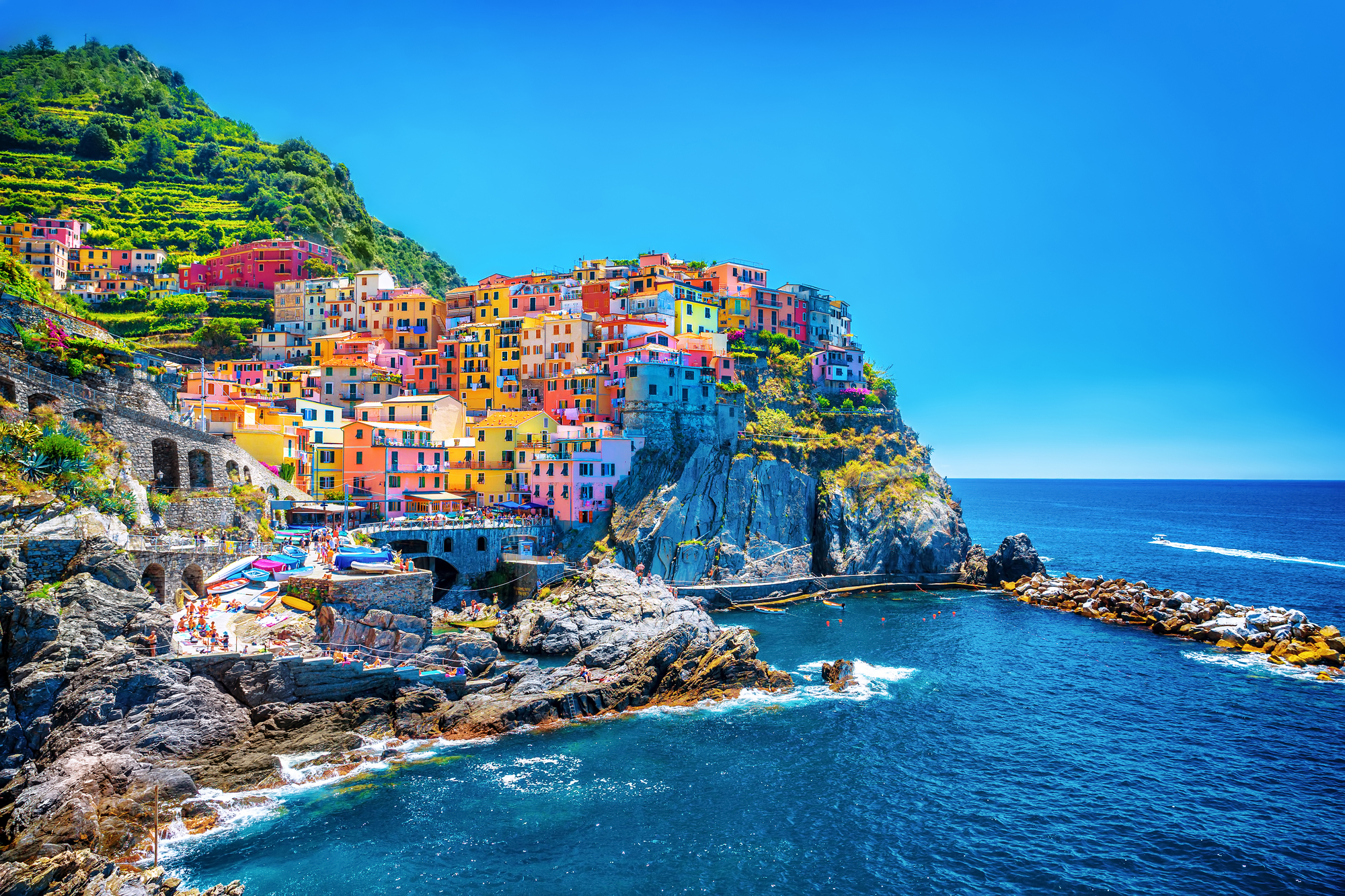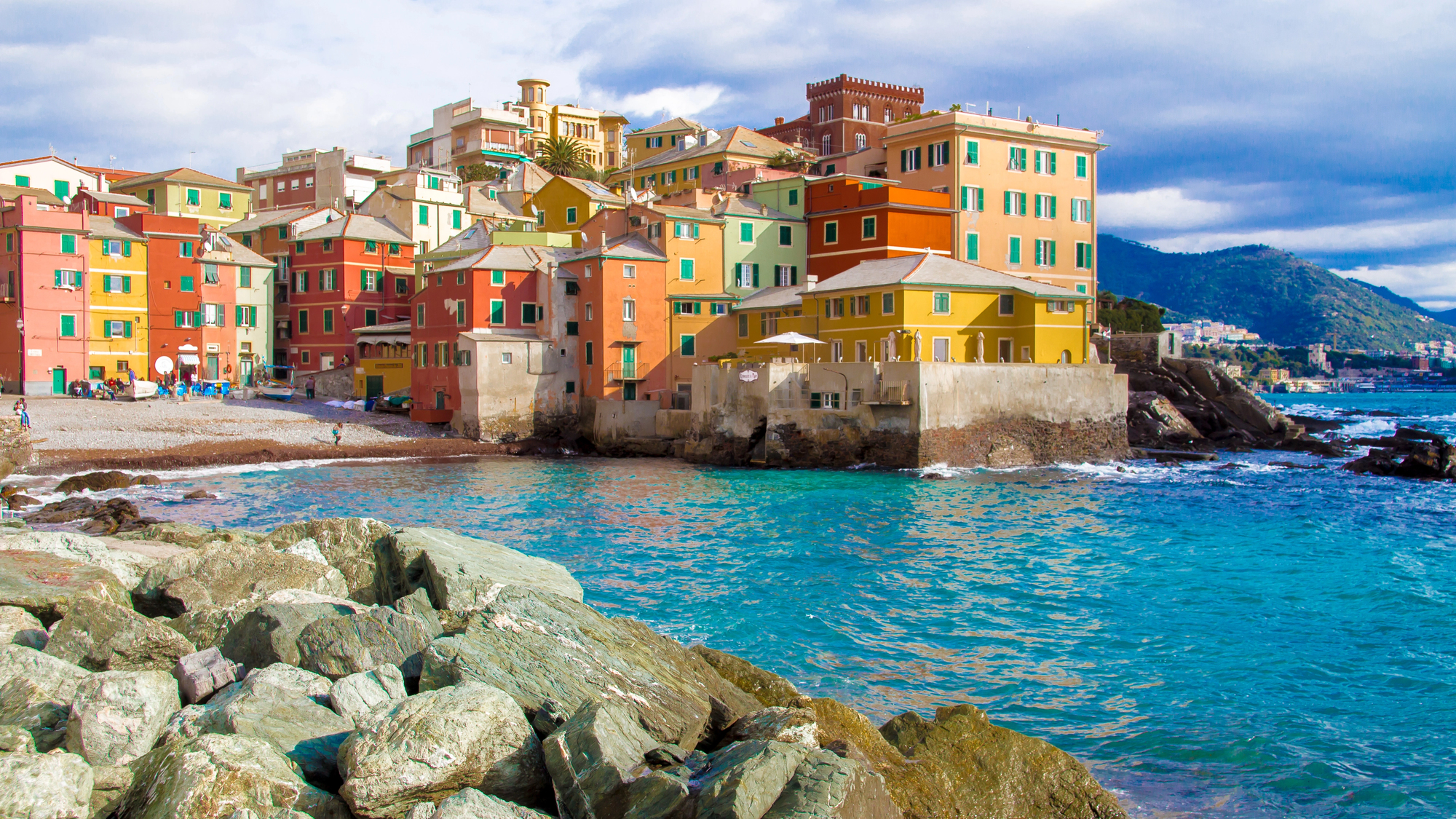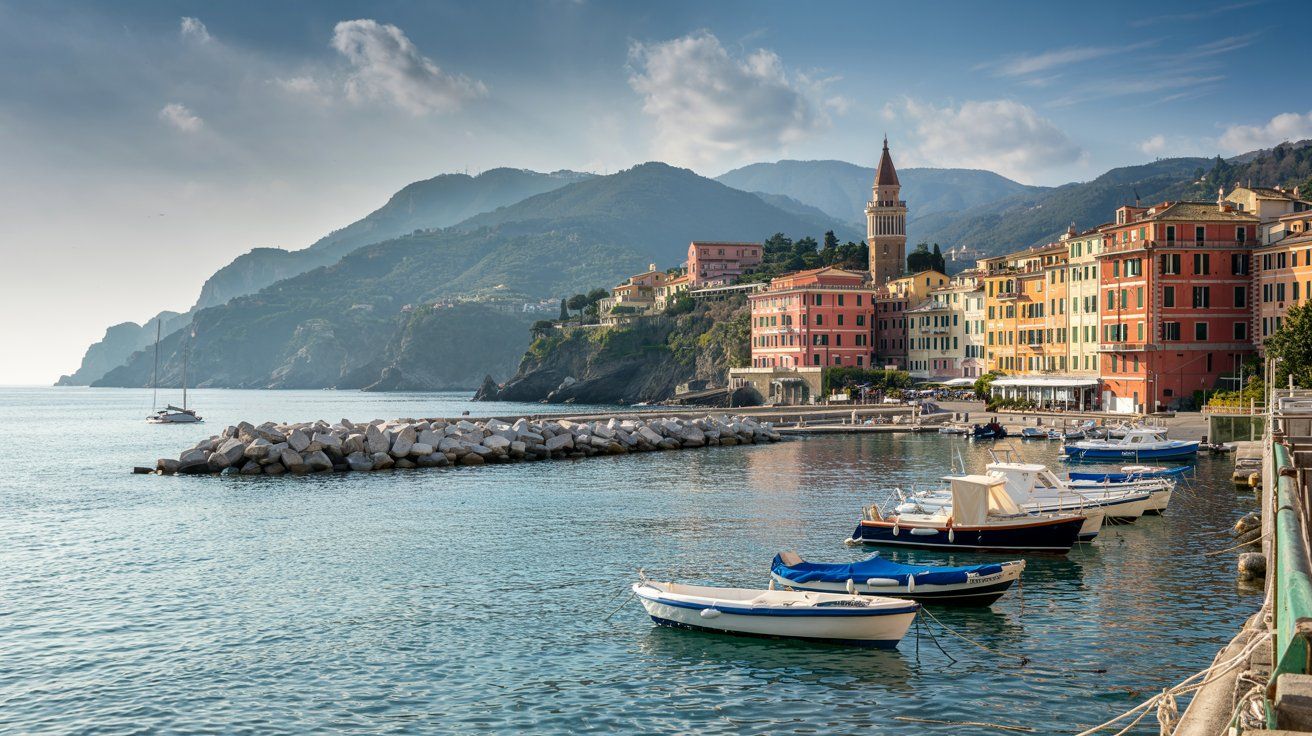Genoa’s Old Town, known as the historical center, is a captivating maze of narrow medieval alleys called “caruggi” that will transport you back in time. Bounded by ancient gates like Porta dei Vacca and Porta Soprana, this district stretches from east to west and represents one of the largest and most densely populated historic centers in Europe. The heart of medieval Genoa offers an authentic Italian experience with its network of narrow streets lined by tall houses, small shops, and charming cafes.
As you wander through this remarkable area, you’ll discover why part of Genoa’s historic center has earned recognition as a UNESCO World Heritage site. The “Castello” hill with the ancient church of Santa Maria di Castello stands among the must-see attractions in this fascinating district. The entire area provides a genuine glimpse into Italy’s past while still buzzing with modern energy.
Get a discount of 15% to 70% on accommodation in the Italian Riviera! Look for deals here:
Italian Riviera Hotels, Apartments, B&Bs
When exploring the Old Town of Genoa (or Genova in Italian), take time to follow the historic streets of Via Cairoli, Via Garibaldi, and Via XXV Aprile that help define this incredible neighborhood. These pathways lead you through centuries of history while offering delightful opportunities to experience local culture, cuisine, and architecture that can’t be found anywhere else in Italy.
History Of Genoa Old Town
Genoa’s Old Town, known locally as the “Centro Storico,” has its roots firmly planted in the medieval period. You’ll find yourself walking through one of Europe’s largest preserved medieval quarters when visiting this remarkable district.
During the 11th century, Genoa emerged as a powerful maritime republic, a status it maintained for over seven centuries until 1797. This period marked Genoa’s golden age, when it became known as “La Superba” (The Proud One) due to its impressive achievements and prosperity.
The narrow winding alleys, called “caruggi,” date back to this medieval origin. They form a maze-like network running from east to west across the old city, creating the distinctive character that defines Genoa’s historic center today.
The area known as “Castello” was the primitive nucleus of the city, centered around the ancient Santa Maria di Castello church. From this core, the city expanded outward as its influence grew.
Trade was the lifeblood of medieval Genoa. The Port of Genoa became one of the Mediterranean’s busiest shipping hubs, connecting Europe with exotic goods from distant lands. This commercial success funded the beautiful palaces and churches that still stand today.
Genoa’s most famous son, Christopher Columbus, was born here in 1451. The navigator who discovered America embodied the city’s adventurous maritime spirit that helped establish Genoa as a dominant force in Mediterranean trade.
The historic center is now bounded by the ancient city gates of Porta dei Vacca and Porta Soprana, and by the streets of Via Cairoli, Via Garibaldi, and Via XXV Aprile—physical reminders of this proud city’s storied past in the heart of Liguria.
What To See In Genoa Old Town
Genoa’s Old Town, known as the historic center, is one of Europe’s largest medieval quarters. The heart of this area is defined by ancient city gates and historic streets like Via Garibaldi, which showcase the city’s rich maritime past.
Wander through the famous caruggi – narrow winding alleys that create a labyrinth of shops, cafes, and hidden piazzas. These atmospheric pathways give you a glimpse into everyday Genoese life that has continued for centuries.
The impressive Porta Soprana gates stand as a reminder of the city’s medieval defenses. Nearby, you’ll find the purported house of Christopher Columbus, Genoa’s famous son.
Piazza de Ferrari serves as the main square and meeting point in the Old Town, with its magnificent fountain at the center. From here, you can easily explore the surrounding historical buildings.
Don’t miss the Palazzi dei Rolli along Strade Nuove, a collection of Renaissance and Baroque palaces that housed visiting dignitaries in Genoa’s heyday. These magnificent buildings now serve as museums and galleries.
The Ducal Palace (Palazzo Ducale) once housed the Doges of Genoa and now hosts cultural exhibitions and events. Its grand architecture tells the story of Genoa’s powerful past.
Head toward the revitalized Porto Antico (Old Port) area to visit Italy’s largest aquarium and ride the panoramic Bigo elevator for spectacular views of the city and sea.
Piazza San Matteo offers a peaceful respite from the busy streets, surrounded by elegant palaces once owned by the powerful Doria family.
How To Get To Genoa Old Town
Getting to Genoa’s charming Old Town is straightforward with several convenient options. You’ll find it’s easily accessible whether you arrive by cruise ship, train, or airplane.
If you’re arriving at the Genoa cruise port (Ponte Dei Mille), you’re in luck! The Old Town is within walking distance. This short stroll lets you begin soaking in Genoa’s atmosphere immediately.
For those coming by train, Principe Station serves as an excellent entry point to the Old Town. From here, it’s just a brief walk to reach the historic center’s narrow medieval streets and beautiful piazzas.
A free metro line runs opposite the Genoa port and takes you to the city center in just 4 stops. This is a budget-friendly alternative to cruise shuttles or taxis.
If you’re flying into Genoa, the Volabus connects the airport with both Principe and Brignole train stations. The journey takes about 30 minutes, and from either station, you can easily reach the Old Town.
Bus line 1 is another option for traveling between the port and the city center, providing a convenient public transportation alternative.
For day-trippers, Genoa makes an excellent base for exploring the Italian Riviera. Regional trains from Genoa Brignole station can take you to nearby coastal towns like Santa Margherita Ligure for around €4.50 one-way.
Genoa Old Town Visitor Information
The heart of medieval Genoa awaits you in its historic center, bounded by ancient city gates Porta dei Vacca and Porta Soprana. This labyrinth of narrow alleyways, locally called “caruggi,” reveals centuries of history with every step.
Best Time to Visit: Mornings on weekdays offer fewer crowds. The Old Town is magical year-round, but spring (April-May) and fall (September-October) provide pleasant temperatures for exploring.
Safety Tips:
- Keep valuables secure in crossbody bags
- Stay on well-lit streets after dark
- Be aware of your surroundings in crowded areas
Most visitors spend 3-4 hours exploring the Old Town. Wear comfortable shoes as the medieval streets are uneven and sometimes steep.
Perfect for:
- Couples seeking romantic strolls
- History enthusiasts
- Photography lovers
- Food explorers
Families with young children might find the narrow passages challenging with strollers. Consider baby carriers instead.
The historic center is easily walkable, but it helps to have a map or navigation app as the winding streets can be confusing for first-timers.
Many shops close for afternoon riposo (1-4 PM), so plan accordingly. For the most authentic experience, join a Genoa Walking Tour that guides you through the Old Town and elegant Strada Nuova.
Where To Stay Near Genoa Old Town
When visiting Genoa’s historic center, you’ll find excellent accommodation options both within and near the Old Town. The area offers a mix of luxury hotels, boutique properties, and budget-friendly choices.
Hotel Bristol Palace stands as one of the best options in downtown Genoa. This elegant 4-star hotel boasts an impressive Art Nouveau staircase and provides comfortable rooms with classic décor. Its central location makes it perfect for exploring the Old Town on foot.
The NH Collection Genova Marina offers a unique experience with rooms overlooking the harbor. You’ll enjoy beautiful views and easy access to the Porto Antico area.
For a truly historic stay, consider Hotel Palazzo Grillo or Hotel Le Nuvole Residenza d’Epoca. Both properties are housed in beautifully restored historic buildings within the Old Town itself.
If you’re traveling by train, B&B Hotel Genova Principe provides convenient accommodation near the train station. This location makes it easy to explore both Genoa and take day trips to nearby towns on the Italian Riviera.
Budget-conscious travelers should look at Family Apartments San Lorenzo, offering self-catering options that let you live like a local in the heart of Old Town.
The best areas to stay include the Porto Antico (Old Port), the historic center around Via Garibaldi, and near Piazza De Ferrari. These locations put you within walking distance of major attractions while providing plenty of dining options.
Things To Do Near Genoa Old Town
Genoa’s Old Town is surrounded by exciting attractions. The Porto Antico (Old Port) area offers plenty to explore just steps away from the historic center.
Italy’s largest aquarium sits in this revitalized port area. You’ll encounter thousands of marine creatures in over 70 tanks – perfect for families or marine enthusiasts.
Take a stroll along the palm-lined promenade where you can watch boats coming and going while enjoying the sea breeze. This relaxing walk offers excellent views of the harbor.
The Musei di Strada Nuova houses impressive art collections in spectacular palazzos. These museums showcase works by masters like Rubens and Van Dyck.
Visit Palazzo Reale to witness the opulent lifestyle of Genoa’s nobility. This royal palace features lavish furnishings, beautiful gardens, and remarkable artwork.
Christopher Columbus enthusiasts should see Casa di Cristoforo Colombo, the alleged birthplace of the famous explorer. Nearby stands Porta Soprana, one of the best-preserved medieval gates.
The Chiesa del Gesu dei Santi Ambrogio e Andrea boasts stunning baroque architecture and valuable artworks. Its ornate interior will leave you speechless.
Don’t miss the Mercato Orientale off Via XX Settembre. This indoor market offers fresh local produce, specialty foods, and an authentic glimpse of daily Genoese life.
For a charming seaside escape, head to Boccadasse. This colorful fishing village feels worlds away from the city center but is just a short trip away.
Get a discount of 15% to 70% on accommodation in the Italian Riviera! Look for deals here:
Italian Riviera Hotels, Apartments, B&Bs


